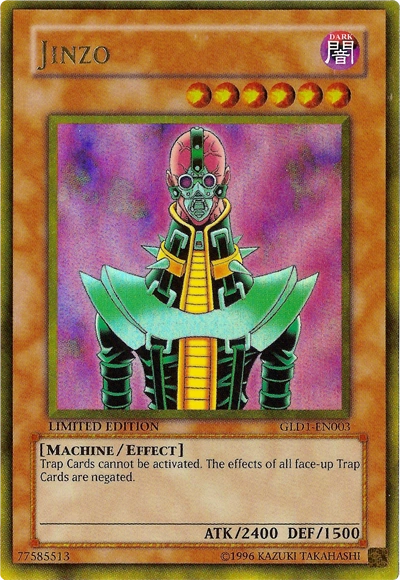Effect Monsters are the second type of Monster Card that you should be familiarizing yourself with. Following on from "Basics of Monster Cards", the only explanation yet to be given are on the different types of Monster Effects. Knowing the differences between these effects can prove critical.
Continuous Monster Effects[]
These are the most basic; Continuous Monster Effects come into play the second the monster hits the field. Their effects are "always on", and do not start a chain. This is why you can summon "Jinzo", and you opponent will then be unable to chain to "Jinzo's" effect with, say, "Torrential Tribute".
Flip Monster Effects[]
Monsters with these effects will have "FLIP" at the start of their lore. These effects activate as soon as the monster is flipped face-up, unless the effect is negated, such as by the effect of "Dark Ruler Ha Des" or "Ceasefire". If the monster is flipped face-up during the Damage Step; damage calculation is carried out, then the Flip Effect is resolved. This will become clearer later on.
Ignition Monster Effects[]
These are effects that can only be activated during your Main Phase, be it your first or your second. The most common mistake, is thinking a monster's effect can't be activated during either player's turn; in truth, this can be possible, but usually only Quick Effects of a Monster can be activated during either player's turn. Ignition Monster Effects cannot be chained to each other, so you cannot, for example, chain the effects of two "Hand of Nephthys", to avoid Tributing other monsters, and at the same time, Special Summon 2 "Sacred Phoenix of Nephthys".
Trigger Monster Effects[]
These can be easily identified, as these effects require a specific time, event or situation to have occurred for the effect to become eligible for activation. There are two sub-types of Trigger Monster Effects.
Mandatory Trigger Effects[]
These are effects that must activate, the player is not given a choice as to whether to do so or not. Common examples include "Zaborg the Thunder Monarch" and "Sangan". These effects cannot miss their timing, and if they would. Form a new chain.
Optional Trigger Effects[]
These are effects that must be the last link on the Chain for the player to be able to activate the effect when the condition(s) for activation are met. For example, if your opponent activates "Dust Tornado", and you chain "Call of the Haunted", targeting "Dark Magician of Chaos", "Dust Tornado" will resolve after "Dark Magician of Chaos" hits the field via "Call of the Haunted". "Dust Tornado" will be the last card whose effect has resolved on the field, so the controller of "Dark Magician of Chaos" will not be able to activate the effect.
Quick Monster Effects[]
These are a special type of Monster Effect; they are the only Spell Speed 2 Monster Card Effects, and the only one that can be activated during either player's turn. These can be easily identified because the player can choose, at any time (subject to activation limitations), to activate the effect, either on its own, or chained to another Spell Speed 1 or Spell Speed 2 effect. Spell Speeds will be explained in greater detail later on.
Summon Monster Effects[]
These are an advanced form of Monster Effects, and are only used in a few isolated cases. These are not to be confused with "Summoning Conditions" (which restrict how the monster is Summoned to the field). An example of a card with a Summon Monster Effect is "Cocoon of Evolution".
"Cocoon of Evolution" allows you to, instead of conducting your Normal Summon or Set for the turn, equip it to a face-up "Petit Moth" as an Equip Spell Card.

